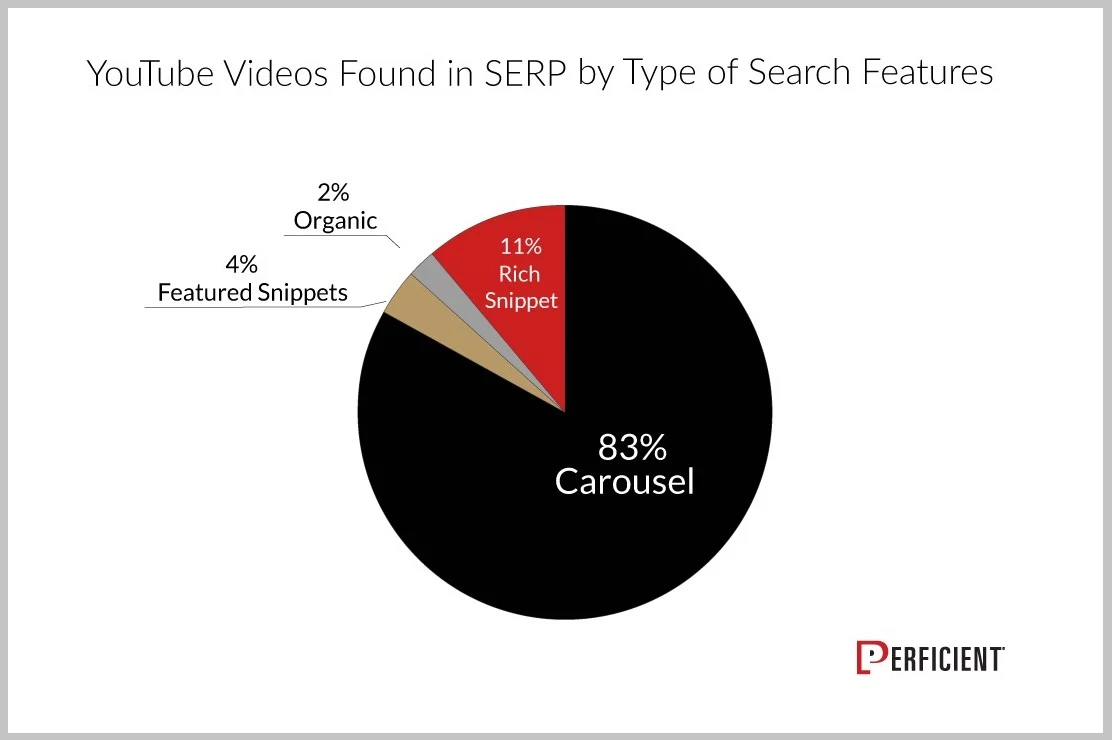It’s hard to find any search engine in the world that could come close to challenging Google’s utter dominance in this territory. This leads to a lot of concerns among a number of people that are out there, many of whom fear that this would lead to Google possessing undue control over the industry and essentially becoming a gateway of sorts to the internet. If you’re skeptical about how Google’s reach could be harmful, one example of how it can be rather anti-competitive can be seen in a recent study conducted by the Wall Street Journal.
Now a new study also revealed that the vast majority of videos featured in the video carousel that comes up with search results, around 83% or so, came from YouTube. Now, YouTube is without a shadow of a doubt the biggest video streaming platform in the world, but with all of that having been said and now out of the way it is important to note that it is by no means the only one. Google is supposed to show results based on relevance, and the fact that it so heavily favors a video streaming platform that it itself owns could show as an example of how it can use its various services to create an infinite feedback loop that would keep channeling viewers from one Google owned property to another and prevent other companies from being as competitive as they need to be in order to sustain themselves in the market.
The essential thing to note here is the placement of the search results. YouTube’s videos dominated the carousel, whereas videos featured on sites other than YouTube ended up mostly in the organic search results. This basically means that these videos are relevant according to Google’s own algorithm, but there is a clear discrepancy between their organic relevance and their chances of getting feature in the Google search carousel.
It’s pretty clear that a lot more transparency needs to be provided from Google’s end. The company has been criticized for its stifling of competition, much like the rest of the Big 5 tech companies. This is partly the reason why most of these companies are on the verge of experiencing stricter regulations as well.
Read next: YouTube introduces HDR support for live streams to improve the video quality
Now a new study also revealed that the vast majority of videos featured in the video carousel that comes up with search results, around 83% or so, came from YouTube. Now, YouTube is without a shadow of a doubt the biggest video streaming platform in the world, but with all of that having been said and now out of the way it is important to note that it is by no means the only one. Google is supposed to show results based on relevance, and the fact that it so heavily favors a video streaming platform that it itself owns could show as an example of how it can use its various services to create an infinite feedback loop that would keep channeling viewers from one Google owned property to another and prevent other companies from being as competitive as they need to be in order to sustain themselves in the market.
The essential thing to note here is the placement of the search results. YouTube’s videos dominated the carousel, whereas videos featured on sites other than YouTube ended up mostly in the organic search results. This basically means that these videos are relevant according to Google’s own algorithm, but there is a clear discrepancy between their organic relevance and their chances of getting feature in the Google search carousel.
It’s pretty clear that a lot more transparency needs to be provided from Google’s end. The company has been criticized for its stifling of competition, much like the rest of the Big 5 tech companies. This is partly the reason why most of these companies are on the verge of experiencing stricter regulations as well.
Read next: YouTube introduces HDR support for live streams to improve the video quality


